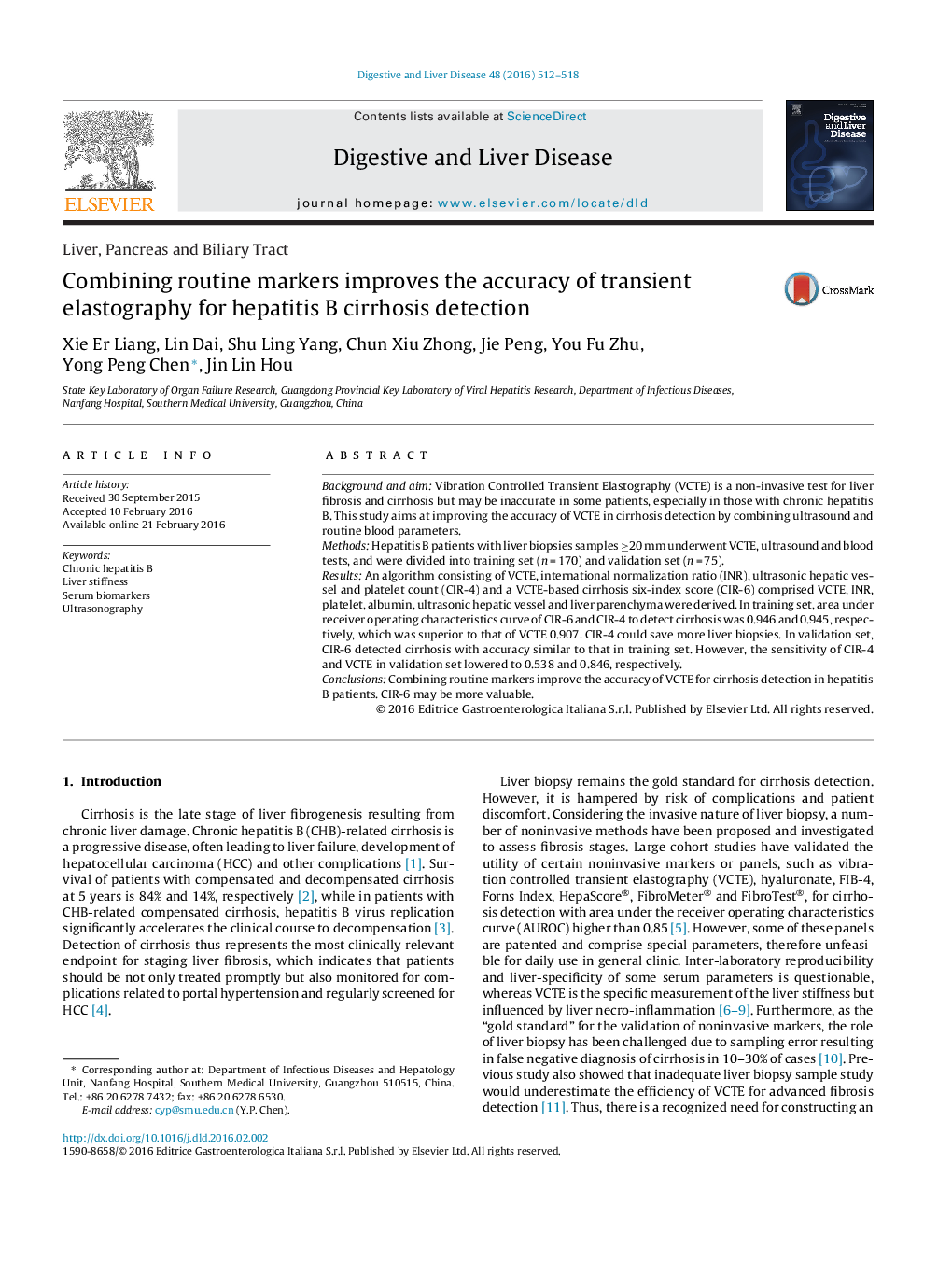| Article ID | Journal | Published Year | Pages | File Type |
|---|---|---|---|---|
| 6088061 | Digestive and Liver Disease | 2016 | 7 Pages |
Background and aimVibration Controlled Transient Elastography (VCTE) is a non-invasive test for liver fibrosis and cirrhosis but may be inaccurate in some patients, especially in those with chronic hepatitis B. This study aims at improving the accuracy of VCTE in cirrhosis detection by combining ultrasound and routine blood parameters.MethodsHepatitis B patients with liver biopsies samples â¥20 mm underwent VCTE, ultrasound and blood tests, and were divided into training set (n = 170) and validation set (n = 75).ResultsAn algorithm consisting of VCTE, international normalization ratio (INR), ultrasonic hepatic vessel and platelet count (CIR-4) and a VCTE-based cirrhosis six-index score (CIR-6) comprised VCTE, INR, platelet, albumin, ultrasonic hepatic vessel and liver parenchyma were derived. In training set, area under receiver operating characteristics curve of CIR-6 and CIR-4 to detect cirrhosis was 0.946 and 0.945, respectively, which was superior to that of VCTE 0.907. CIR-4 could save more liver biopsies. In validation set, CIR-6 detected cirrhosis with accuracy similar to that in training set. However, the sensitivity of CIR-4 and VCTE in validation set lowered to 0.538 and 0.846, respectively.ConclusionsCombining routine markers improve the accuracy of VCTE for cirrhosis detection in hepatitis B patients. CIR-6 may be more valuable.
